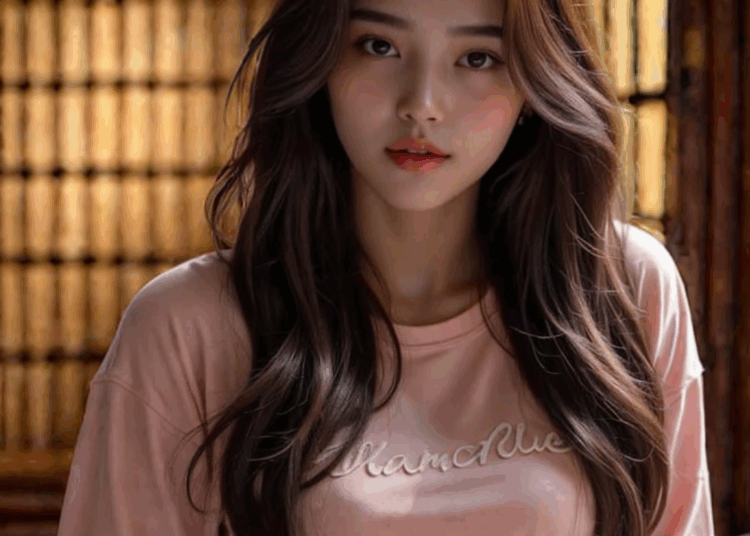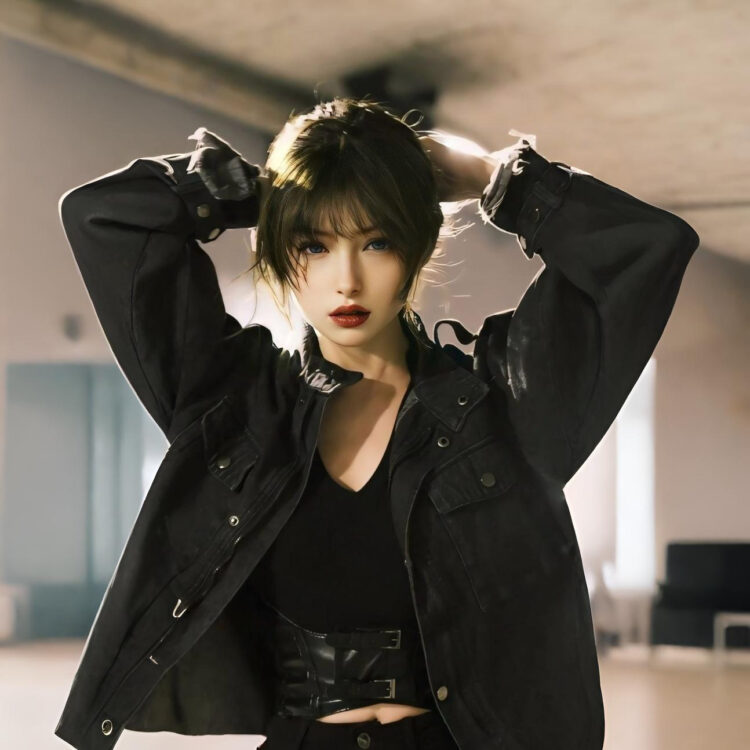Kicking off with Hyper-Realistic AI Women: Art or Illusion?, this opening paragraph is designed to captivate and engage the readers, providing an interesting overview of the topic.
The discussion will delve into the definition of hyper-realistic AI women, ethical considerations, artistic expression vs. objectification, and psychological effects of interacting with AI-generated women.

 In conclusion, the exploration of Hyper-Realistic AI Women: Art or Illusion? reveals the complex interplay between art, technology, ethics, and societal perceptions. This topic challenges us to rethink traditional notions of beauty and the impact of AI on our perceptions of reality.
In conclusion, the exploration of Hyper-Realistic AI Women: Art or Illusion? reveals the complex interplay between art, technology, ethics, and societal perceptions. This topic challenges us to rethink traditional notions of beauty and the impact of AI on our perceptions of reality.

Definition of Hyper-Realistic AI Women
In the realm of art and technology, hyper-realistic AI women refer to computer-generated depictions of women that are designed to closely mimic the appearance and behavior of real human beings. These AI-generated women exhibit a level of detail and realism that can often be indistinguishable from actual photographs or videos of real individuals.Characteristics of Hyper-Realistic AI Women
- High level of detail: Hyper-realistic AI women showcase intricate details such as skin texture, facial features, and expressions with precision.
- Realistic movements: These AI-generated women are programmed to move and interact in a lifelike manner, adding to the illusion of realism.
- Emotional depth: AI technology allows for the creation of hyper-realistic women who can convey a wide range of emotions through facial expressions and body language.
- Versatility: Hyper-realistic AI women can be customized to fit various scenarios, from art installations to virtual assistants.
Role of Artificial Intelligence in Creating Hyper-Realistic Depictions of Women
Artificial intelligence plays a crucial role in the creation of hyper-realistic AI women by leveraging advanced algorithms and machine learning techniques. These technologies enable the generation of highly detailed and realistic images, animations, and interactions based on vast datasets of human characteristics and behaviors. Through AI, artists and developers can push the boundaries of what is achievable in terms of lifelike representations of women, blurring the lines between art and reality.Ethical Considerations
When it comes to creating hyper-realistic AI women, a myriad of ethical considerations arise that cannot be ignored. The impact of these creations on societal perceptions of beauty and body image, as well as the ethical responsibility of artists and developers, must be carefully examined.Impact on Societal Perceptions
Creating hyper-realistic AI women can potentially perpetuate unrealistic beauty standards, leading to detrimental effects on society's perception of beauty and body image. These creations may reinforce harmful stereotypes and ideals, further exacerbating issues of self-esteem and body dissatisfaction among individuals, especially young women.Ethical Responsibility of Artists and Developers
Artists and developers hold a significant ethical responsibility when depicting women through AI. They must consider the implications of their creations on the audience and strive to promote positive, diverse representations of women. It is crucial for creators to be mindful of the impact their work may have on individuals and society as a whole, taking into account the potential consequences of perpetuating harmful stereotypes or unrealistic beauty standards.Artistic Expression vs. Objectification
Artistic expression is a form of creativity that allows artists to convey emotions, ideas, and messages through their work. It can be a powerful tool for self-expression and communication. However, when it comes to hyper-realistic AI women, there is a fine line between artistic expression and objectification.Artistic Expression
Artistic expression in the context of hyper-realistic AI women involves creating lifelike representations that can evoke a range of emotions and responses from viewers. Artists may use AI technology to push the boundaries of what is possible in art and challenge traditional notions of beauty and identity.- Hyper-realistic AI women can be seen as a form of art that explores the intersection of technology and creativity.
- These creations can open up new possibilities for artistic expression and storytelling.
- They can also serve as a reflection of the artist's imagination and vision.
Objectification
On the other hand, the risk of objectifying hyper-realistic AI women is a valid concern. When these AI women are created solely for the male gaze or to perpetuate harmful stereotypes, they can reinforce societal norms that devalue women and reduce them to mere objects of desire.- Objectification of hyper-realistic AI women can contribute to the normalization of unrealistic beauty standards and harmful gender stereotypes.
- It can lead to the commodification of women's bodies and reinforce patriarchal values.
- The focus on physical perfection in these AI creations can overshadow their autonomy and individuality.
Reflection of Societal Values
The portrayal of women in AI art reflects broader societal values and norms regarding gender, beauty, and power dynamics. Artists have the opportunity to challenge these norms and provoke meaningful discussions through their work.- By critically examining the representation of women in hyper-realistic AI art, we can uncover underlying biases and assumptions about gender roles.
- Artists can use their creations to subvert stereotypes and empower women by presenting them in diverse and multifaceted ways.
- The way women are depicted in AI art can spark conversations about equality, diversity, and inclusivity in the art world and beyond.
Psychological Effects
Interacting with hyper-realistic AI women can have a significant impact on individuals' psychological well-being and perception of reality. These AI-generated women blur the lines between what is real and what is artificial, leading to a range of emotions and reactions from users.Potential Benefits and Drawbacks
- Benefits:
- Companionship: AI women can provide companionship and emotional support for individuals who may be lonely or isolated.
- Therapeutic Purposes: Some individuals may find comfort and solace in interacting with hyper-realistic AI women as a form of therapy.
- Exploration of Identity: Interacting with AI women can allow users to explore different aspects of their identity in a safe and non-judgmental environment.
- Drawbacks:
- Dependency: Users may become overly dependent on AI women for emotional support, leading to potential issues with real-life relationships.
- Dehumanization: Treating AI women as mere objects for pleasure or entertainment can contribute to the dehumanization of women in society.
- Loss of Reality: Spending excessive time interacting with hyper-realistic AI women may blur the lines between fantasy and reality, affecting users' perception of the world.
Uncanny Valley Phenomenon
The uncanny valley phenomenon refers to the discomfort or unease people feel when encountering objects or beings that are almost, but not quite, human-like. In the context of hyper-realistic AI women, this phenomenon can influence human perceptions by triggering feelings of eeriness or revulsion. As AI technology advances and creates more lifelike representations of women, navigating the uncanny valley becomes a crucial consideration in designing AI applications that are psychologically well-received by users.End of Discussion
 In conclusion, the exploration of Hyper-Realistic AI Women: Art or Illusion? reveals the complex interplay between art, technology, ethics, and societal perceptions. This topic challenges us to rethink traditional notions of beauty and the impact of AI on our perceptions of reality.
In conclusion, the exploration of Hyper-Realistic AI Women: Art or Illusion? reveals the complex interplay between art, technology, ethics, and societal perceptions. This topic challenges us to rethink traditional notions of beauty and the impact of AI on our perceptions of reality.







